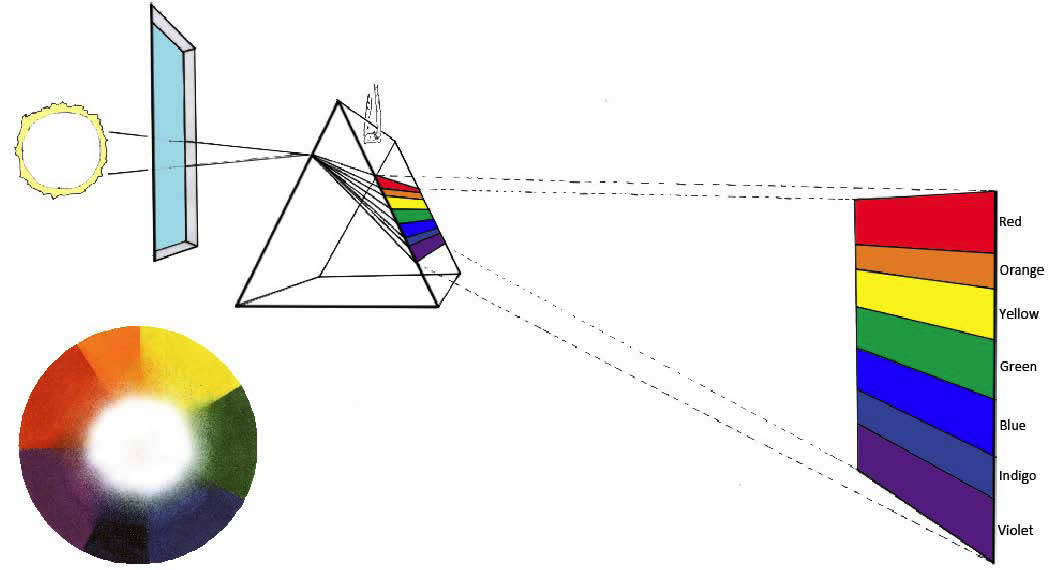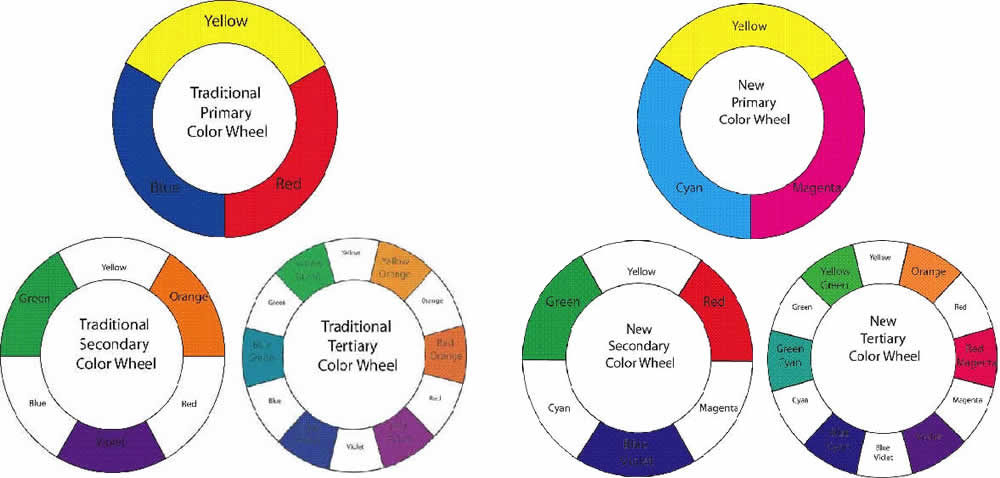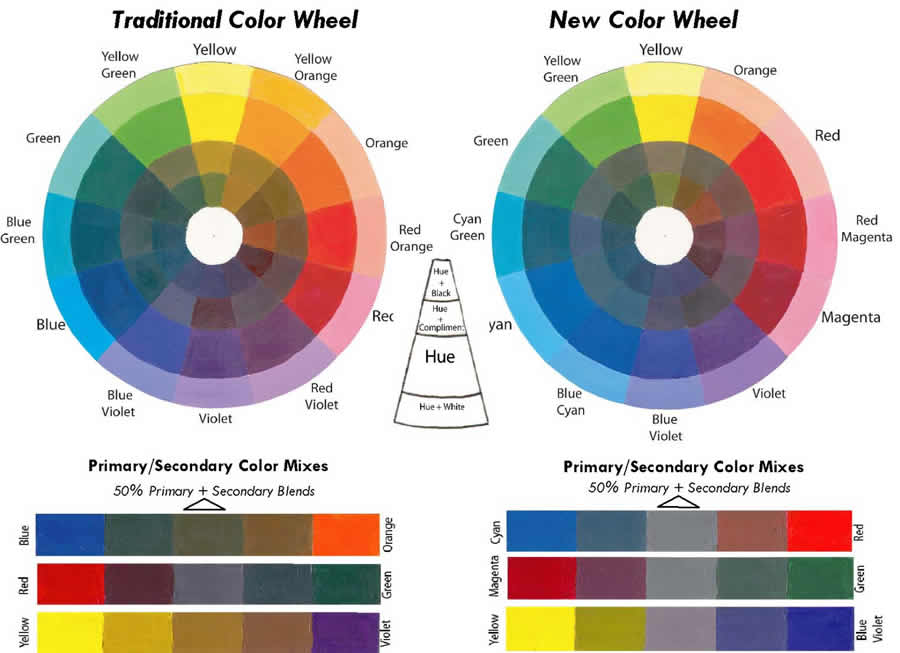By Sheri Doty

Follow this link to visit Sheri’s website to view more of her work and to learn more about her.
Color Studies – Color Applications and Definitions
Part 2 – The Color Wheel
A Color Wheel is merely an arrangement of hues in a circle that is illustrative of an organization of colors. The color wheel is a tool by which a practitioner can study color mixing, color properties and color harmony.

It was Sir Isaac Newton who made the first color wheel designed after the natural spectrum of a prism or rainbow. By dissecting light through a prism of glass, the colors of light fanned out in a band of light waves lengths named violet, indigo, blue, green, yellow, orange and red. He placed these colors into a circular ring which was divided into seven unequal parts. He placed white in the center of the ring because he said all colors were to be found in a white light. His theory of color was the basis for future studies of colors in a wheel.
Since the introduction of Newton’s color wheel based on systematic color in a closed ring of color hues in 1666, there have been a variety of color wheel experiments.

The Subtractive Color Wheel
The subtractive color wheel deals with the mixing of pigments. When you mix colors using high intensity primary color pigments, you are using the subtractive color method. Each time pigments are added to other pigments the color mix is less pure than the colors used to mix it making the color less intense or duller in intensity. When all three primary color pigments are mixed together, they make gray or black.
The Additive Color Wheel
The Additive color wheel deals with the mixing
of light. When equal amounts of a red light, a blue light and a green light are mixed together they produce white. Because a mixture of red, blue and green light make white, they are called the additive primaries.
Two Pigment Color Wheels Used in Art and Industry
There are two accepted versions of the pigment color wheel used as a standard in art and industry today. They both use twelve hues, but the primary colors and color placement on the two color wheels are different. The “old” or Traditional Color wheel is based on the Red, Yellow and Blue primary color set. The “new” or “Element” color wheel uses Magenta, Cyan and Yellow as primary colors.
The Red, Yellow and Blue primary color system was first recognized in circa 1731. The Traditional color wheel is the most widely taught study of color today using Johan Itten’s color harmony and contrast theories. Itten’s book The Elements of Color refers to color relationships that form a basis for composition. The Magenta, Cyan and Yellow primary color system was introduced in circa 1855 when Itelm Holtz published his theory of the additive laws of colored light and the subtractive laws of colored pigment. The new color system evolved from developments in chemical colors and processes. The color printing process and photography are based on the new color wheel.
Hue Relationships on the Color wheel

- Primary Colors: Primary Colors are three intense pigments that can be colors, yet cannot produce themselves satisfactorily.
- Secondary Colors: Using the three primaries, three secondary colors are produced by mixing equal parts of the two adjacent primary colors.
- Tertiary or Intermediate Colors: All additional hues that fall between the primary and secondary colors are called Tertiary or Intermediate Colors. Tints and shades may also be referred to as tertiary colors.

Many artists argue that the “New” color wheel is more correct in color placement than the “Old” color wheel. Their reasons are that the hue placement “New Color Wheel” helps the artist make accurate color mixtures and that true complimentary colors should make a perfect neutral gray when mixed at a 50% ratio.
Hue relationships on both color wheels can be interchangeable. Both color wheels have three primary colors, three secondary colors and six tertiary colors.
These two color wheels may differ in color placement but the properties of color, color harmony and contrast remains consistent. Color theories continue to evolve and change with artistic and scientific advancement. I believe that experience through experimentation with the properties of color remains a reliable means by which an artist learns his or her craft. Espousing only one theory limits the serendipity of discovery.
Leave a Reply